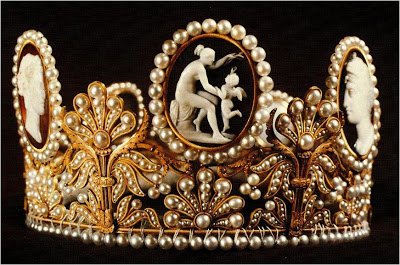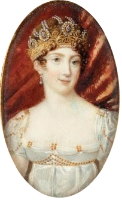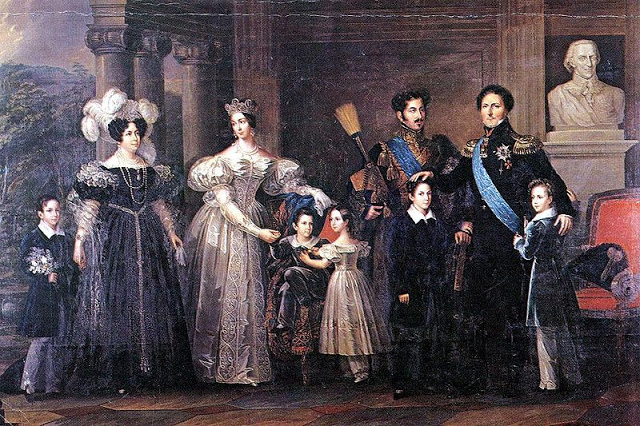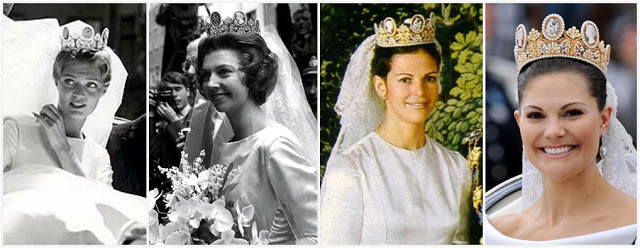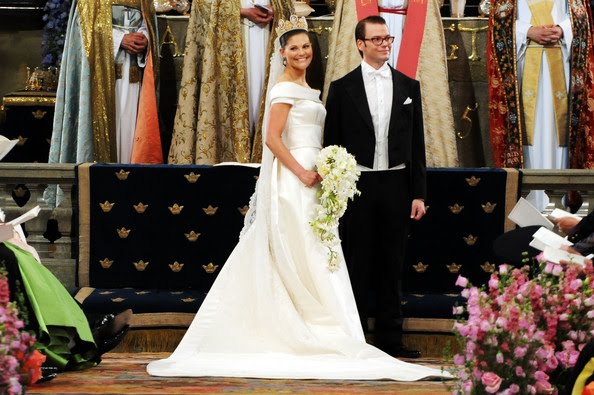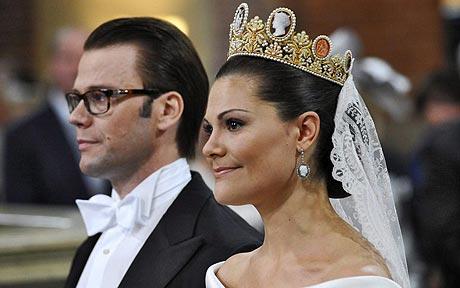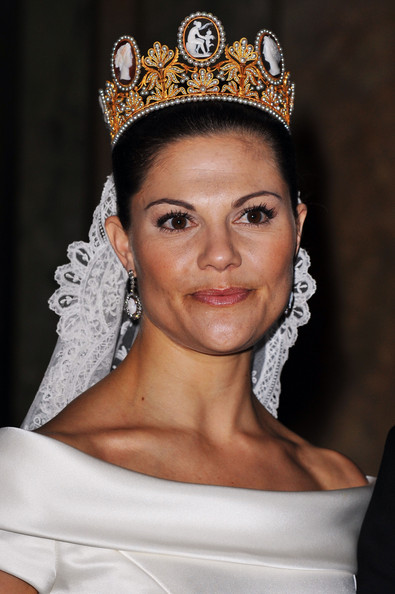Joséphine had two children, Eugène and Hortense, with her previous husband Alexandre; however, she was not able to provide Napoléon with a biological heir to the French throne. At around 1810, he divorced her and married Marie Louise of Austria, daughter of the Holy Roman Emperor. Joséphine relocated to the Château de Malmaison near Paris, taking her jewelry along with her.
In 1812 Joséphine loaned the cameos to her daughter, Hortense, who had briefly been Queen of Holland during the first decade of the nineteenth century. Hortense wore the cameos in a portrait painted by Anne-Louis Girodet. This is the first known depiction of the cameos.
Joséphine died of pneumonia in 1814. As was the custom, an inventory of her jewels was taken at the time of her death, but historian Trond Norén Isaksen noted the cameo parure was not included in this inventory. Exactly what happened to the cameos after her death is a bit unclear. Writer Vincent Meylan argues that her son, Eugène, received them when he and his sister Hortense were given their mother's jewels to divide. His evidence for this claim may be sound as the set reappears again in the line of Joséphine's son Eugène.
Eugène married Princess Augusta of Bavaria in a dynastic wedding eight years earlier at the behest of Napoléon, and by 1814 he was living in Munich at the court of his father-in-law with Augusta and their children. Eugène and Augusta's eldest daughter, Joséphine of Leuchtenberg, married Crown Prince Oscar of Sweden and Norway in 1823. Her marriage was also a dynastic one, having been arranged by Oscar's father, King Carl XIV Johan. Interestingly though Oscar is a Swedish prince, his family's roots are just as French as Joséphine's. His father was born Jean Bernadotte and served as a Marshal in the Empire under Napoléon prior to being elected as Sweden's future king. Oscar's mother, Désirée Clary, had been engaged to Napoléon until he met Joséphine de Beauharnais; in Sweden, she is known as Queen Desideria.
It is very likely that Joséphine of Leuchtenberg received her grandmother's cameo parure as a wedding gift from her father, taking the set with her to Stockholm. Upon her marriage she would be known by the Swedish version of her name: Josefina.

